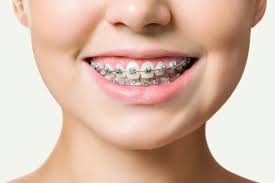Getting braces can be a very painful experience. There are a few things you can do to help make the process more comfortable. The American Association of Orthodontists recommends that you clean your teeth before getting braces, which will help prevent food from getting stuck under the brackets and wires. Similarly, you can use dental wax to help ease discomfort. If you do not have access to a dentist, you can also get over-the-counter pain relievers.
You should also be sure to brush your teeth and floss daily to help avoid food trapping and plaque buildup. Your dentist will give you instructions on how to do this. If you do not brush your teeth after meals, you can try using an oral rinse to help ease discomfort. However, avoid foods that have a high sugar content, as they can be hard on the brackets. You may find more information at check how orthodontics works
 When you get braces, your mouth may be sore for a few days. The reason is because the arch wires are tightening your teeth. The amount of soreness will go down after three to five days. However, you should see your orthodontist as soon as possible if you notice soreness after adjusting your braces.
When you get braces, your mouth may be sore for a few days. The reason is because the arch wires are tightening your teeth. The amount of soreness will go down after three to five days. However, you should see your orthodontist as soon as possible if you notice soreness after adjusting your braces.
Some people also experience soreness after removing their braces. This is because the teeth are not able to adjust back to their original position after their growth stops. If this is the case, your orthodontist may need to perform orthognathic surgery to correct your bite.
Typically, the amount of time required to wear braces will vary depending on the severity of your orthodontic problem. For mild cases, treatment may only take a few months. For more serious cases, treatment may take up to six years.
During the initial procedure, your orthodontist will take an impression of your teeth. This will help the doctor determine the exact placement of the braces. He may also need to take radiographic examinations. If your dentist decides you are a good candidate for braces, he will discuss the options available to you.
The most common type of braces is traditional braces. These are made of metal brackets and wires. These brackets are glued to each tooth and are connected to each other with arch wires. The wires are either stainless steel or nickel titanium. Braces are then adjusted periodically until the teeth are in the proper position.
Another type of braces is lingual braces, which are designed on the impressions of your mouth. They offer better efficiency and flexibility. They are especially beneficial for adults who have complicated orthodontic needs.
You can increase the comfort of your braces by using dental wax and oral rinses. You may also have to avoid certain foods, such as apples and hard foods, because they can break the bond between your braces and your teeth.
You may also have to take spacers, which are made of rubber bands or metal rings. These are placed at the back of your mouth a week before your braces are placed. The purpose of spacers is to create space in the back of your mouth, so that your jaw can move forward.
